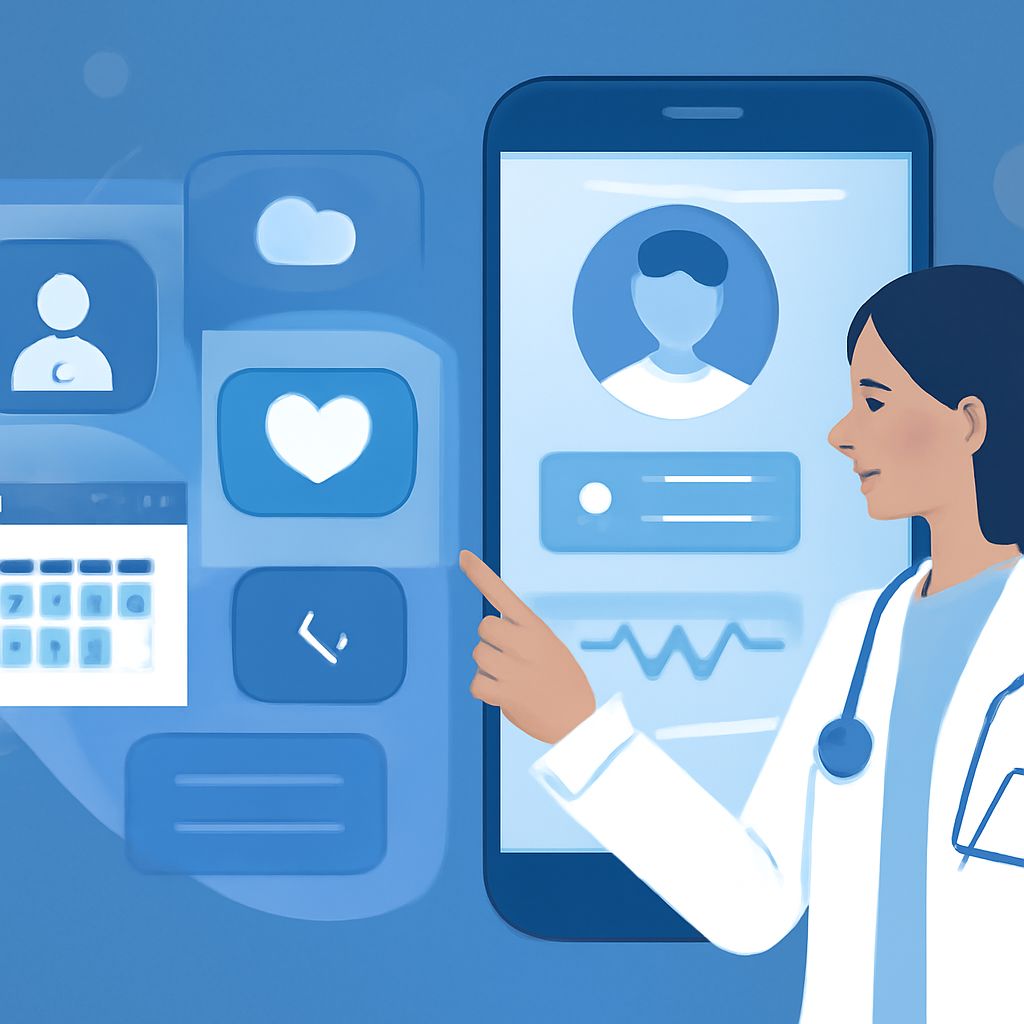Introduction
The healthcare industry is undergoing a digital transformation, with a significant focus on enhancing patient engagement and experience through technology. As we approach 2025, the importance of user interface (UI) design in healthcare applications cannot be overstated. A well-designed UI can improve patient satisfaction, streamline processes, and ultimately lead to better health outcomes. In this article, we explore the top UI design trends that are poised to revolutionize the patient experience in healthcare apps.
1. Personalization and Customization
One of the most significant trends in UI design for healthcare apps is the emphasis on personalization. Users are increasingly expecting applications to be tailored to their individual needs and preferences.
Key Components of Personalization:
- User Profiles: Allow patients to create profiles that include their medical history, preferences, and goals.
- Adaptive Interfaces: Implement interfaces that adapt based on user behavior, making navigation intuitive.
- Content Recommendations: Utilize algorithms to suggest relevant articles, services, or reminders based on the user’s health journey.
2. Telehealth Integration
The COVID-19 pandemic has accelerated the adoption of telehealth services. As healthcare apps continue to integrate telehealth functionalities, the UI must cater to the unique needs of virtual consultations.
UI Considerations for Telehealth:
- Simplified Scheduling: Use clear and straightforward scheduling interfaces that allow patients to book appointments effortlessly.
- Virtual Waiting Rooms: Design engaging waiting room experiences, including the option to view educational content while waiting for a consultation.
- Real-Time Communication Tools: Ensure that chat and video functionalities are seamlessly integrated into the application, with intuitive controls.
3. Mobile-First Design
As mobile devices become the primary access point for many users, a mobile-first design approach is essential. This trend focuses on delivering optimal user experiences on smartphones and tablets.
Features of Mobile-First Design:
- Responsive Layouts: Utilize responsive design techniques to ensure that applications look and function well on any device.
- Touch-Friendly Interfaces: Design buttons and navigation elements that are easy to use on touch screens.
- Offline Capabilities: Implement offline functionality that allows users to access important information without an internet connection.
4. Data Visualization
Data plays a crucial role in healthcare, and effective visualization of this data can empower patients to make informed decisions about their health. UI design trends are increasingly focusing on data visualization techniques.
Effective Data Visualization Techniques:
- Interactive Dashboards: Create dashboards that allow users to interact with their health data, such as lab results or activity levels.
- Infographics: Use infographics to present complex information in a digestible format.
- Progress Tracking: Include visual progress bars or graphs to help patients track their health goals and milestones.
5. Voice User Interfaces (VUIs)
Voice technology is becoming more prevalent in everyday life, and integrating voice user interfaces into healthcare apps can provide a convenient option for users.
Benefits of VUIs in Healthcare:
- Accessibility: Voice interfaces can make applications more accessible for individuals with disabilities or those who may have difficulty using traditional input methods.
- Hands-Free Interaction: Patients can interact with the app without needing to physically manipulate their devices, which can be particularly beneficial during medical situations.
- Quick Information Retrieval: Users can quickly ask for information, such as appointment details or medication instructions, enhancing overall patient experience.
6. Enhanced Security Features
As healthcare apps handle sensitive personal information, robust security features are paramount. The latest UI design trends prioritize user security while maintaining a seamless experience.
UI Security Enhancements:
- User Authentication: Implement multi-factor authentication and biometrics for secure access to personal health information.
- Visual Privacy Controls: Use easily understandable visual indicators to inform users about the security of their data.
- Data Encryption: Clearly communicate the app’s data encryption practices to reassure users about their privacy.
7. Gamification Elements
Incorporating gamification into healthcare apps can increase user engagement and adherence to health plans. UI design trends are leveraging game-like elements to motivate patients.
Gamification Strategies:
- Reward Systems: Create systems that reward patients for completing health-related tasks, such as exercise or medication adherence.
- Challenges and Competitions: Introduce challenges that encourage users to achieve their health goals while competing with friends or family.
- Progress Badges: Award badges for reaching milestones, fostering a sense of achievement and motivation.
8. Emphasis on Mental Health and Wellbeing
With the growing recognition of mental health’s importance, healthcare apps are increasingly focusing on supporting mental wellbeing. UI design trends are adapting to create a comforting and supportive environment.
UI Features for Mental Health:
- Calming Color Palettes: Use color schemes that promote calmness and reduce anxiety for users navigating mental health resources.
- Mindfulness Tools: Include features that encourage mindfulness practices, such as meditation guides or breathing exercises.
- Community Support: Foster a sense of community by providing access to peer support groups within the app.
Conclusion
As we look forward to 2025, the evolution of UI design in healthcare apps holds the promise of significantly improving the patient experience. By embracing these trends, healthcare providers can foster stronger patient engagement, enhance satisfaction, and ultimately lead to better healthcare outcomes. It is evident that the future of healthcare is not only about delivering medical services but also about creating a holistic, patient-centered experience that respects individual needs and preferences.
FAQ
What are the top UI design trends for healthcare apps in 2025?
In 2025, the top UI design trends for healthcare apps include personalized user interfaces, voice-activated features, augmented reality for patient education, intuitive navigation, and data visualization tools.
How can personalized user interfaces improve patient experience in healthcare apps?
Personalized user interfaces improve patient experience by tailoring content and features to individual user needs, enhancing engagement and making it easier for patients to access the information that is most relevant to them.
What role does augmented reality play in healthcare app design?
Augmented reality in healthcare app design enhances patient education by providing interactive visualizations of medical procedures and conditions, enabling patients to better understand their health.
Why is intuitive navigation important in healthcare apps?
Intuitive navigation is crucial in healthcare apps as it ensures that users can easily find the information and services they need, reducing frustration and improving overall satisfaction.
How can voice-activated features enhance usability in healthcare applications?
Voice-activated features enhance usability by allowing patients to interact with the app hands-free, which is especially beneficial for those with mobility issues or when multitasking.
What is the significance of data visualization tools in healthcare apps?
Data visualization tools in healthcare apps provide patients with clear and understandable insights into their health data, empowering them to make informed decisions about their wellness.




